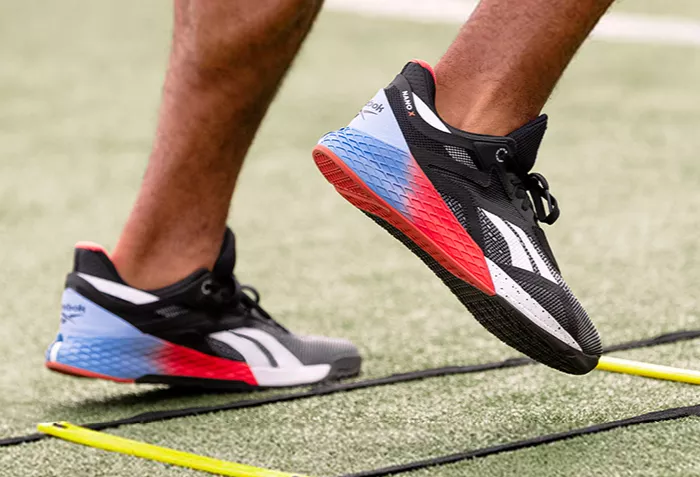Hiking shoes and running shoes are designed for different purposes, but many outdoor enthusiasts wonder if they can overlap. This article explores whether hiking shoes are suitable for running, focusing on design differences, performance trade-offs, scenarios where they might work, and potential risks. By understanding these factors, you can decide if hiking shoes meet your needs or if investing in dedicated running shoes is better.
Key Differences Between Hiking and Running Shoes
To evaluate compatibility, we must first compare their designs:
Weight
- Hiking Shoes: Heavier (15–25 oz per shoe) to support rough terrain.
- Running Shoes: Lightweight (7–12 oz) for speed and efficiency.
Sole and Traction
- Hiking Shoes: Thick, rigid soles with deep lugs (e.g., Vibram) for grip on rocks/mud.
- Running Shoes: Flexible soles with shallow treads optimized for forward motion on roads or trails.
Cushioning
- Hiking Shoes: Moderate cushioning to absorb shock during descents.
- Running Shoes: Thick midsoles (e.g., EVA foam) for repeated impact protection.
Ankle Support
- Hiking Shoes: Often mid-cut or high-cut to stabilize ankles on uneven ground.
- Running Shoes: Low-cut for unrestricted movement.
Breathability
- Hiking Shoes: Durable uppers (leather/synthetic) prioritize protection over airflow.
- Running Shoes: Mesh uppers maximize ventilation.
When Can Hiking Shoes Work for Running?
In specific scenarios, hiking shoes may suffice:
Short Trail Runs
- Terrain: Rocky, muddy, or uneven trails where traction and foot protection matter.
- Example: A 2–3 mile run on a steep, technical trail.
Multi-Sport Adventures
- Use Case: Combining hiking and running in one outing (e.g., fastpacking).
- Example: Running downhill after summiting a peak.
Transition Periods
- Scenario: Using hiking shoes for occasional runs if you’re new to running or on a budget.
Drawbacks of Using Hiking Shoes for Running
Hiking shoes lack critical features for running efficiency and safety:
Reduced Speed
- Weight Impact: Heavier shoes increase fatigue and slow your pace.
- Example: A 10-minute mile in hiking shoes vs. an 8-minute mile in running shoes.
Higher Injury Risk
- Ankle Mobility: Rigid ankle support limits natural stride, increasing strain on knees/hips.
- Cushioning: Insufficient shock absorption raises the risk of stress fractures or joint pain.
Overheating
- Breathability: Thick materials trap heat, causing discomfort on long runs.
Durability Concerns
- Sole Wear: Running’s repetitive motion wears down hiking shoe treads faster.
When Should You Avoid Using Hiking Shoes for Running?
Road Running
- Issue: Stiff soles and poor flexibility make them uncomfortable on pavement.
Long-Distance Runs
- Risk: Weight and lack of cushioning lead to muscle fatigue and blisters.
Speed Workouts
- Problem: Heavy shoes hinder agility and acceleration.
Hybrid Shoes: A Middle Ground
Some shoes blend hiking and running features:
Trail Running Shoes
Design: Lightweight, aggressive tread, and rock plates for technical trails.
Examples:
Salomon Speedcross 6 (12 oz, 10mm drop).
Altra Lone Peak 7 (10.2 oz, zero drop).
Approach Shoes
- Use: Designed for climbing approaches but flexible enough for light running.
- Example: La Sportiva TX4 (15 oz, sticky rubber sole).
Expert Opinions
- Podiatrists: Warn against using hiking shoes for frequent running due to injury risks.
- Trail Runners: Recommend hybrid shoes for technical terrain but prefer dedicated runners for races.
How to Test Hiking Shoes for Running
- Step 1: Try short runs (1–2 miles) on familiar terrain.
- Step 2: Check for hotspots, arch support, and flexibility.
- Step 3: Monitor post-run soreness in knees, ankles, or feet.
Alternatives to Hiking Shoes
Trail Running Shoes
- Best for: Rugged trails, agility, and comfort.
Road Running Shoes
- Best for: Pavement, speed, and cushioning.
Cross-Training Shoes
- Best for: Mixed workouts (gym + light trails).
Maintenance Tips
- Clean: Remove dirt after runs to preserve traction.
- Dry: Air out shoes to prevent odor.
- Replace: Retire hiking shoes after 400–500 miles.
Cost Comparison
- Hiking Shoes: 80–200.
- Trail Running Shoes: 100–180.
- Road Running Shoes: 80–160.
Conclusion
While hiking shoes can handle short, technical runs, they are not ideal for regular or long-distance running. Their weight, rigidity, and lack of cushioning increase injury risks and reduce performance. For runners who hike occasionally, trail running shoes offer a versatile compromise. Prioritize purpose-built footwear to enhance comfort, speed, and safety. Always match your shoes to your primary activity—your feet will thank you.
Related topics:
Best Hiking Running Shoes: A Detailed Guide
Best Hiking Shoes for Flat Feet Women

